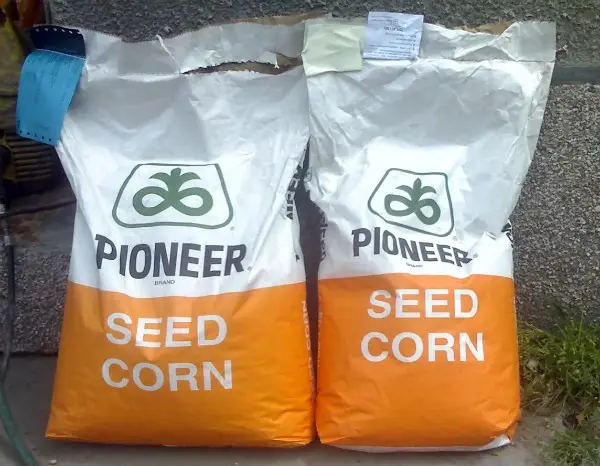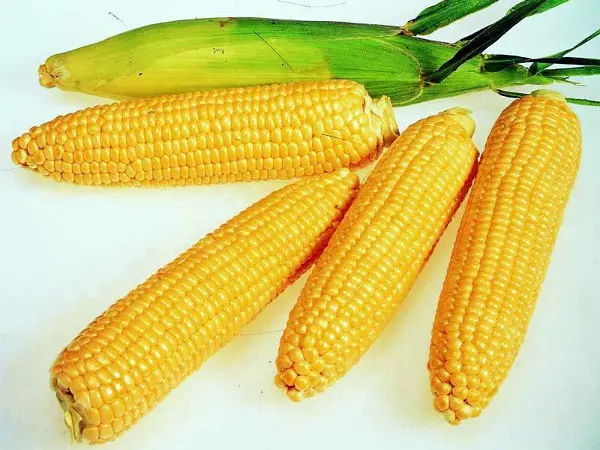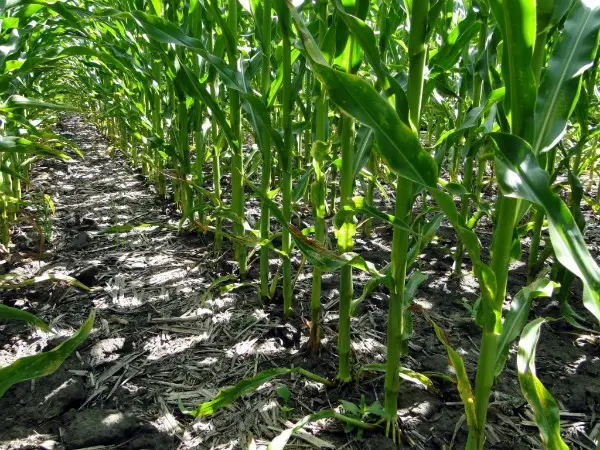Growing corn, you always want to try new varieties when the old ones either get bored or do not bring the desired yield. In this case, the search for new varieties can be delayed for a long time, because it is quite risky to buy a new variety blindly. It is most reasonable and safe to turn to producers who have been conducting research for decades, developing new varieties and bringing excellent seed material to the market. In this article, we will look at Pioneer corn seeds.
Description
Pioneer has been breeding new varieties of corn, sunflower, sorghum and soybeans for more than 30 years, improving the quality and characteristics of crops every year.
At the moment, the best bred varieties of corn from this manufacturer are: PR38D93 Anasta, 3893 Clarica, Pioneer 37D25 and Pioneer 39F58.

These varieties are suitable for growing in different regions, have high yields and resistance to various diseases. Thus, you will be able to choose Pioneer corn seeds taking into account the climate of your region, soil type, growing conditions.
All four varieties belong to the group of teeth. The cobs have large, slightly elongated and flattened grains. The shell is very hard on the sides, while the center and upper part, on the contrary, are soft, mealy. Being one of the most popular varieties of corn for growing on the site, dentate is used for harvesting animal feed, a variety of cereals, alcohol, and flour.
Characterization
PR38D93 Anasta is a mid-season hybrid whose vegetation takes about 90-95 days. The variety has a high and stable yield, while being extremely unpretentious to the type of soil on which it grows. Resistant to low temperatures, so it can be planted in early spring, but it does not tolerate high temperatures, so it is not intended for cultivation in the southern regions. For sowing, it is recommended to plant no more than 75 thousand plants per 1 hectare.

3893 Clarica is also a mid-season hybrid, the vegetation of which takes about 90 days. This variety is characterized by high drought tolerance, which allows limiting itself to 2-3 waterings per season. Bush of medium height, with a developed root system that protects it from lodging. The best regions for growing will be forest-steppe and steppe. The optimal planting density is 75 thousand plants per 1 hectare.
Pioneer 37D25/PR37D25 is a mid-late hybrid with a growing season of about 100 days. Suitable for growing both grain and silage. The variety shows good results when grown on irrigation and high agricultural background. The hybrid is intended for the production of bioethanol. Pioneer 37D25 / PR37D25 tolerates a long spring and low temperatures well. It grows well in the forest-steppe and northern regions, but with proper watering it can also grow in the south. The recommended planting density is 60 thousand plants per 1 hectare.

Pioneer 39F58 / PR39F58 is a medium-early simple hybrid, the vegetation of which takes 80-85 days. The grade is used for receiving grain and a silage. The bush is distinguished by a powerful root system, a strong stem, completely ready to resist weather conditions. Pioneer 39F58 / PR39F58 easily tolerates thickening, quickly releases moisture when ripe and has good resistance to dusty soot. It is recommended to grow this variety in woodland, forest-steppe, steppe. The sowing rate is 80 thousand plants per 1 hectare.
It should be remembered that the hybrids of this company give only one cob per bush. In the case where you have grown more cobs, make sure you grow Pioneer and not another variety.
When to plant
All four varieties are suitable for early sowing, that is, you can plant them in the garden in early April to get a faster harvest. In the case of hybrids, it is better to sow earlier than later, especially if you have not selected seeds by region. The main thing is that flowering should take place before the start of the summer drought, because in the heat the plant does not bloom well, therefore, it does not bear fruit well.

Be guided by the average daily temperature of the soil, as soon as it rises to 8-10 ° C, you can plant corn.
Diseases and pests
Science knows about 190 diseases and pests that can ruin the growing season of corn. Despite the fact that hybrids have increased immunity against certain diseases, plantings should be carefully looked after. Please note that:
- PR38D93 Anasta is resistant to powdery mildew and Fusarium wilt.
- 3893 Clarica shows high resistance to blister smut, southern helminthosporium and Fusarium cobs.
- Pioneer 37D25/PR37D25 is moderately resistant to blister and flying smut.
- Pioneer 39F58/PR39F58 shows high resistance to blister smut and flying smut.
To resist diseases and pests, treat the beds with fungicides and insecticides before planting and before emergence.
Video “Pioner Company Field Day”
Watch this video and you will find out what a visual master class was conducted by Pioneer specialists for farmers in the Voronezh region and what came of it.










Natafuta begu ya pioneer nitaipata wapi kwa sasa